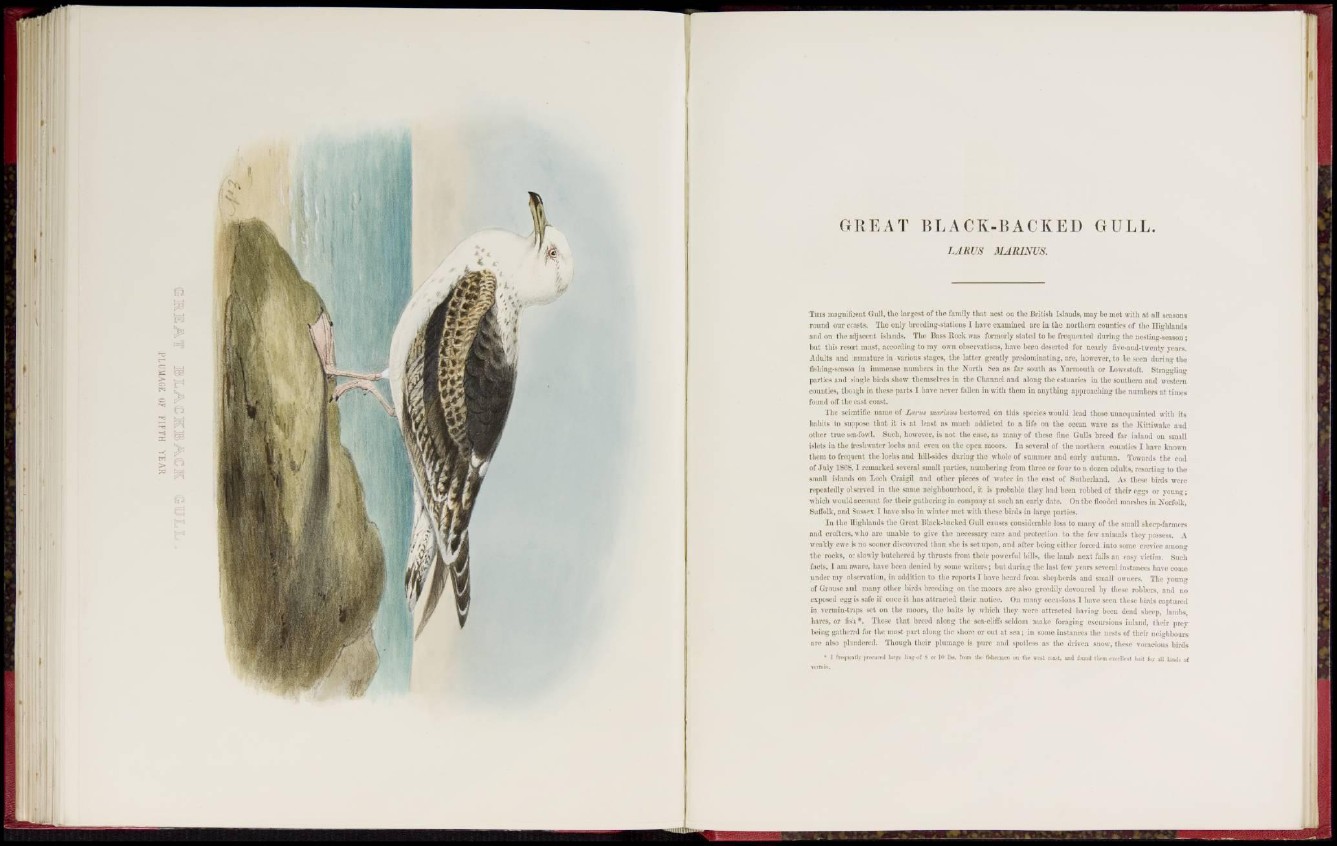
G R E A T B L A C K - B A C K E D GULL.
LJRUS MARINUS.
THIS magnificent Gull, the largest of the family that nest on the British Islands, may he met with at nil seasons
round our eonsts. The only breeding-stations I have examined are in the northern counties of the Highlands
and on the adjacent islands. Tin* Bass Hock was formerly stated to he frei|U en ted during the nesting-season ;
but this resort must, according to my nun observations, have been deserted for nearly livo-and-twcuty years.
Adults and immature in various stages, the latter greatly predominating, are, however, to he seen daring the
lisliing-season in immense numbers in the North Sea as far south as Yarmouth or Lowestoft. Straggling
parties and single birds show themselves iu the Channel and along the estuaries in the southern and western
counties, though iu these parts I have never fallen iu with them in anything approaching the numbers at limes
found off the east coast.
The scientific name of Lam* nuaPMWM bestowed on this species would lead those unacquainted with its
habits to suppose that it is nt least as much addicted to a life on the ocean wave as the Kittiwake mid
other true sea-fowl. Such, however, is not tho case, as many of these tine Gulls breed for inland on small
islets in the freshwater lochs and even on the open moors. In several of the northern counties I have known
Ihem to frequent the lochs and hill-sides during the whole of summer and early autumn. Towards the end
of July ISlib, I remarked several small parties, numbering from three or Tour tu a dozen adults, resorting to the
small islands on Loch Craigil and other pieces of water in the east of Sutherland. As these birds were
repeatedly observed in the same neighbourhood, it is probable they had been robbed of their eggs or young;
which would account for their gathering in company at such an early date. On the flooded marshes in Norfolk,
Suffolk, and Sussex I have also in winter met with these birds in large ]iarlies.
In the Highlands the Great Black-backed Gull causes considerable loss to many of the small shec[i-farmcrs
mid ernl'ters, who arc unable to give the necessary care and protection to the few animals they possess, A
weakly cue is no sooner diseov ered I ban she is set upon, and after being either forced Into some crevice among
the rocks, or slowly butchered by thrusts from their powerful bills, the lamb ucxt falls an easy lictim. Such
facts, I am aware, have been denied by some writers; but during the last few years several instauccs have come
under my observation, in addition to the reports I have heard from shepherds and small owners. The voun"
of Grouse and many other birds breeding on the moors are also greedily devoured by these rubbers and no
exposed egg is safe if once it has attracted their notice. On many occasions I bare seen these birds captured
in vermin-traps set on the moors, the bails by which they were attracted baring been dead sheen lambs
hares, or fish*. Those that breed along the sea-cliffs seldom make foraging excursions inland, their prev
being gathered for the most part along the shore or out at sea; in some instances the nesls of their neighbours
are also plundered. Though their plumage is pure and spotless as the driven snow, these voracious birds